About Daisen
Daisen is a granary region covered in lush mountains and rice fields situated in the south of Akita. The surrounding mountainous landscape changes dramatically season to season and the area supports a long history of local events, traditions and festivals. Known as Hanabi Town and famous for the annual national fireworks competition, Omagari Hanabi, Daisen boasts a display for every month of the year.
This page features a collection of articles written by current and previous members of the Daisen City Board of Education team, sharing some of their favourite places around town. Hopefully their stories provide some insight into what life is like in rural Northern Japan.
Life in Daisen
Life in Daisen — Kira Hahn-Ventrell
2021-09-01
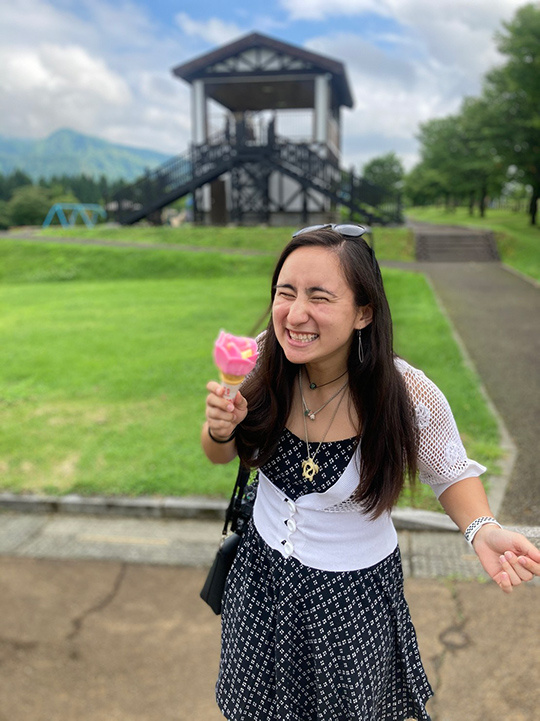
Daisen city was never a destination I had in mind for where I thought I was going in life. Like most ALTs who get placed here, I knew nothing about Daisen city or Akita prefecture. I had heard of Akita dogs, but I knew absolutely nothing else about this place so far up north. Before arriving in Daisen, I was extremely nervous but also thrilled to start my first job after undergrad. I had no expectations other than to embrace discomfort and the notion that I was going to be eating pounds and pounds of local rice.
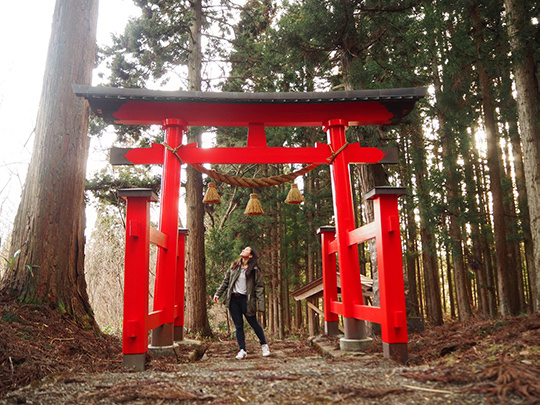
I tried to imagine what my new home would look like, and I thought of the “moving in” scene of My Neighbor Totoro. In that scene, Satsuki and Mei are riding in the back of their truck moving to a new town, as their father drives them on roads alongside endless glistening fields of rice and vegetables and little houses tucked in between tree lines. And on my first ride into Daisen city, I felt that scene start to merge with reality.
I remember my first views of Daisen, my eyes glued to the window of the car, awestruck at the vast fields of rice that seemed to go on for miles and miles to meet the surrounding mountains. It was August, and the tall green stalks seemed to roll like brilliant emerald waves in the wind. Before coming to Daisen, I had never seen a rice field in person, and all of a sudden I was surrounded by miles and miles of them, completely overwhelmed.
I remember my first views of Daisen, my eyes glued to the window of the car, awestruck at the vast fields of rice that seemed to go on for miles and miles to meet the surrounding mountains. It was August, and the tall green stalks seemed to roll like brilliant emerald waves in the wind. Before coming to Daisen, I had never seen a rice field in person, and all of a sudden I was surrounded by miles and miles of them, completely overwhelmed.
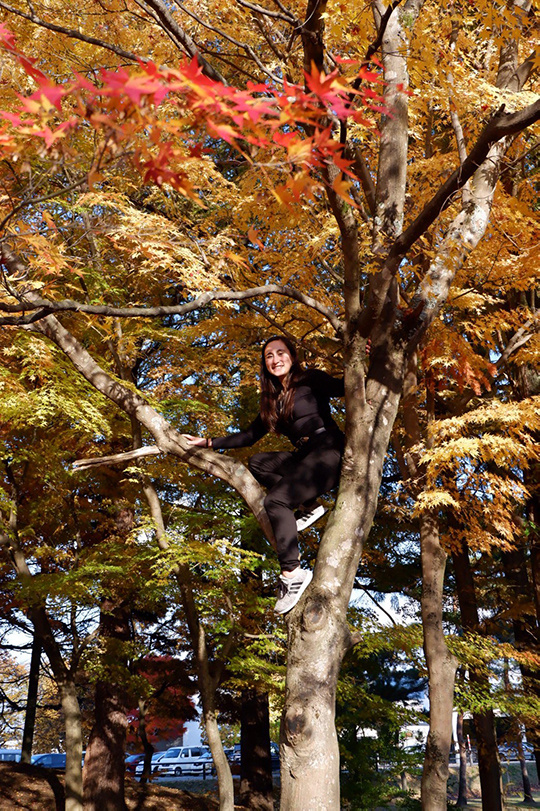
I had no idea what I was getting into. I had never lived in a place where I was surrounded by acres and acres of farms. I grew up in the suburbs outside of Washington D.C., so a majority of farmers I saw were at the weekly farmer’s markets I would frequent for fruits and vegetables. I’ve always preferred big cities to small towns and countryside living, so the idea that a majority of my coworkers had their own farms was hard to grasp. “These people have full-time jobs and multiple miles of farmland to take care of?” I thought it was crazy, but for them, this was the norm.
When fall came around, my coworkers insisted that I try to embrace the crazy and join the students in cutting the rice and harvesting the sweet potatoes next to the school grounds. It was hilarious to see my students compete for who could carry the most rice stalks, or dig out the biggest sweet potato without breaking any pieces off. I made the mistake of asking if I could take a single potato home because it led to my coworkers sending me home with gigantic bags full of produce from their own farms to mark the harvest season such as persimmons, pumpkins, sweet potatoes, and more. My kitchen/dining room looked like a giant’s cornucopia had exploded.
When fall came around, my coworkers insisted that I try to embrace the crazy and join the students in cutting the rice and harvesting the sweet potatoes next to the school grounds. It was hilarious to see my students compete for who could carry the most rice stalks, or dig out the biggest sweet potato without breaking any pieces off. I made the mistake of asking if I could take a single potato home because it led to my coworkers sending me home with gigantic bags full of produce from their own farms to mark the harvest season such as persimmons, pumpkins, sweet potatoes, and more. My kitchen/dining room looked like a giant’s cornucopia had exploded.
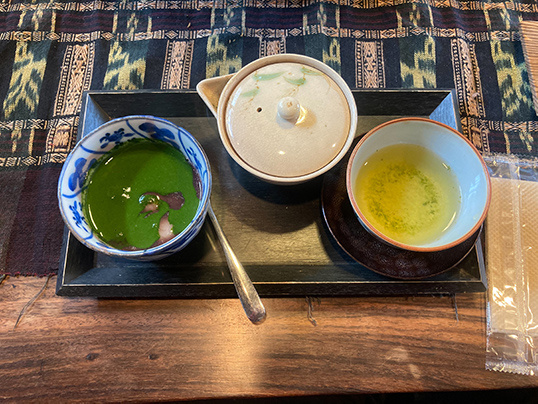
Locals are intensely dedicated to hard work and excellence here, and it’s easy to see this through foods in Daisen. I didn’t know about a majority of special dishes in the area, so one day my coworkers brought in natto soup, rakkyo, iburigakko, and sour plums for me to try. I definitely enjoyed some better than others, but it was a sweet (also sour) introduction to some regional delicacies. As I got more comfortable, I tried out other various dishes and restaurants even if I couldn’t read the menu and didn’t know what I was getting.
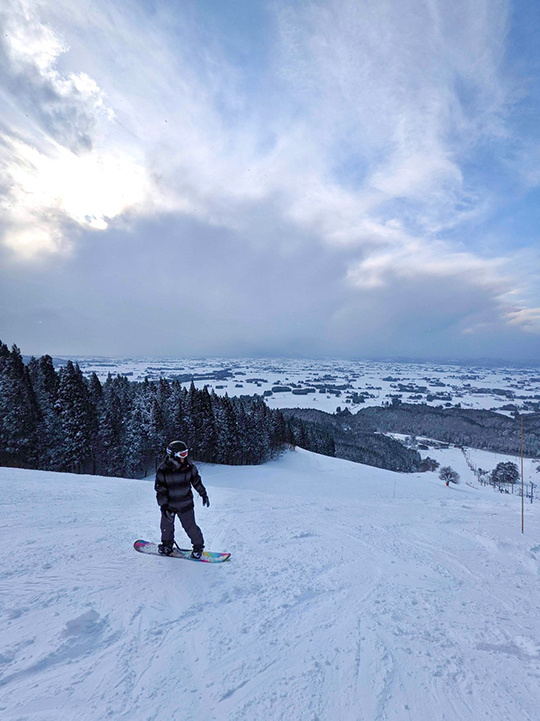
Navigating Daisen started to feel more natural with my rotation of restaurants, an easy commute through rice fields, and my new relationships in the city. Right when I thought I was getting the hang of things, winter arrived. I have never liked winter or any cold weather for that matter. The icy, dry winds and gray skies combined with the multiple feet of snow I had to scrape off my car daily were not easy to embrace. Before living here, I did everything in my power to distance myself from snow and snow sports, but when you live so close to the slopes, how can you resist? After many slips, slides, and crashes into piles of powder, I ended up falling in love with snowboarding. The best days in winter have been the days I spent carving S’s down a mountain and soaking in a hot spring afterward with friends.
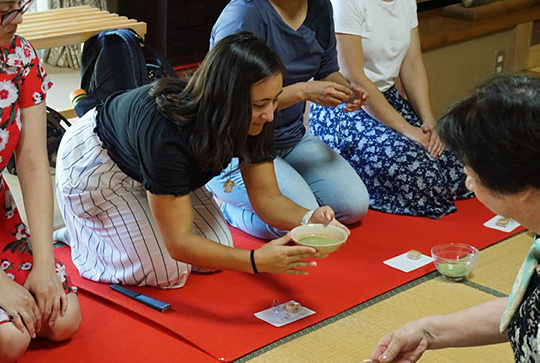
Now, as the snow is melting and the new school year approaches, it’s been quite a year to look back on. There were no festivals to celebrate, no enkais to enjoy, and the fireworks were few and far between. We have all had to make adjustments, and nothing about this situation has been easy. In these times of uncertainty, I’m thankful that I’ve been able to live and work in such a unique setting. It boggles my mind to think that I’ve been here for almost two years. They say the more you learn, the less you know. I’ve learned so much from my time in Daisen, and there are far too many things that I don’t understand about the culture, the food, and the language.

n the end, the best part of my time in Daisen has been the people. From my students to my coworkers, and my new friends to the kind strangers who helped shovel out my car when I got stuck in the snow. The weather may be freezing cold, but the generosity and compassionate gestures of the locals have been incredibly heartwarming.
Life in Daisen — Meghan McCarthy
2020-09-01
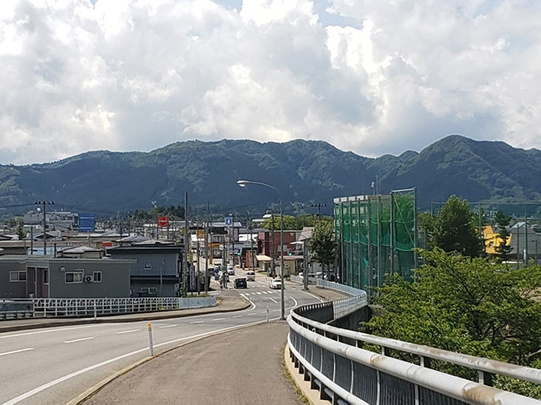
Visiting Japan has been one of those ideas that has always rattled at the back of my head since I was a university student - I studied Japanese as an elective on a whim, and my professor at the time strongly recommended traveling to Japan to really experience the culture and language in a way that no textbook can convey.
A few years later, I find myself living on my own for the first time in my entire life: nearly 10,000 kilometers away and across the world. (In case you were wondering, I am from Hamilton, Ontario, Canada.) Once the jet-lag and honeymoon-esque excitement of being in a foreign country faded, I quickly found myself growing extremely fond of my new home in Daisen.
Daisen possesses a relaxing, peaceful atmosphere and an abundance of natural beauty. It actually reminds me of summer vacations I’ve had on Prince Edward Island, Canada (though with a few more convenience stores thrown in). Daisen is the perfect mix of small-town vibes and easy access to various amenities. Not too rural, but rural enough to be refreshing. Before I knew it, Daisen became a place that I can consider to be a second “home”. I feel that my transition to life in Japan was very smooth, and this can be attributed to the many kind and helpful people around me, whether it be from the random store employee, colleagues, or the fabulous people taking care of us at the Board of Education. The willingness of the local people to try to help the bumbling foreigner is not something to be taken for granted, and I deeply appreciate it. They have gone above and beyond anything I could have expected.
A few years later, I find myself living on my own for the first time in my entire life: nearly 10,000 kilometers away and across the world. (In case you were wondering, I am from Hamilton, Ontario, Canada.) Once the jet-lag and honeymoon-esque excitement of being in a foreign country faded, I quickly found myself growing extremely fond of my new home in Daisen.
Daisen possesses a relaxing, peaceful atmosphere and an abundance of natural beauty. It actually reminds me of summer vacations I’ve had on Prince Edward Island, Canada (though with a few more convenience stores thrown in). Daisen is the perfect mix of small-town vibes and easy access to various amenities. Not too rural, but rural enough to be refreshing. Before I knew it, Daisen became a place that I can consider to be a second “home”. I feel that my transition to life in Japan was very smooth, and this can be attributed to the many kind and helpful people around me, whether it be from the random store employee, colleagues, or the fabulous people taking care of us at the Board of Education. The willingness of the local people to try to help the bumbling foreigner is not something to be taken for granted, and I deeply appreciate it. They have gone above and beyond anything I could have expected.

One of the stand-out points for me about living in Daisen is being surrounded by mountains. I have to say, they are fabulous. The region in Canada where I lived prior to moving to Daisen was more or less flat. It is such a majestic sight to have mountains on every horizon. I never get tired of looking at them, and seeing how they transition through the seasons and the day-to-day weather is always a joy.
In school, one of the questions that the kids like to ask is “What sport do you like?” When I first arrived, I gave the Canadian-standard response of, of course, “ice hockey”. However, since then, I’ve been able to pick up a few new hobbies, and one of those happens to be bouldering. There is a cute bouldering gym in the Yotsuya neighbourhood called Climber’s Studio Sunbow which my friend, Heather, and I have been attending almost every week for around 6 months now. It is great fun and gives a real sense of accomplishment when you finally get to the top of a course that was giving you trouble. Saying “I like bouldering” in response really seems to impress the kids.
In school, one of the questions that the kids like to ask is “What sport do you like?” When I first arrived, I gave the Canadian-standard response of, of course, “ice hockey”. However, since then, I’ve been able to pick up a few new hobbies, and one of those happens to be bouldering. There is a cute bouldering gym in the Yotsuya neighbourhood called Climber’s Studio Sunbow which my friend, Heather, and I have been attending almost every week for around 6 months now. It is great fun and gives a real sense of accomplishment when you finally get to the top of a course that was giving you trouble. Saying “I like bouldering” in response really seems to impress the kids.
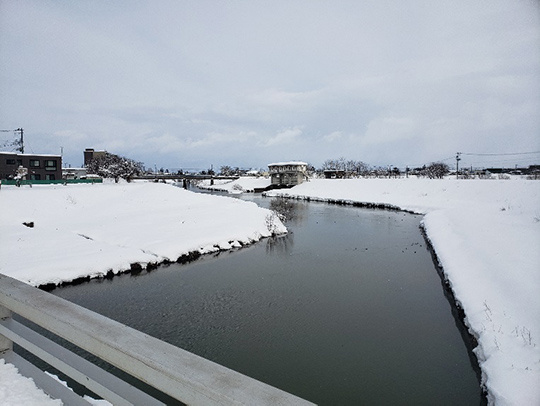
After having lived an entire year in Daisen, I can say that, surprisingly, my favourite seasons have been winter, and the June rainy season. Visually, winter in Daisen is an enchanting season: everything is covered in a pristine layer of white, fluffy snow perfect for snowball fights and various snow-based construction projects. While the previous winter was apparently lacking in snowfall (I only slightly lament not being able to put my new shovel to much use), I was nevertheless introduced to an extraordinary phenomenon incorporated into much of Japan’s infrastructure: the pavement sprinkler. I could only shake my head and don my waterproof boots as the never-ending streams of water melt the snow as fast as it falls. As for the rainy season, accompanying the rain is the blooming of a plethora of gorgeous hydrangeas, my favourite flowers. Even driving the short distance to work became a real treat as the streets were lined with the blue and purple flowers.
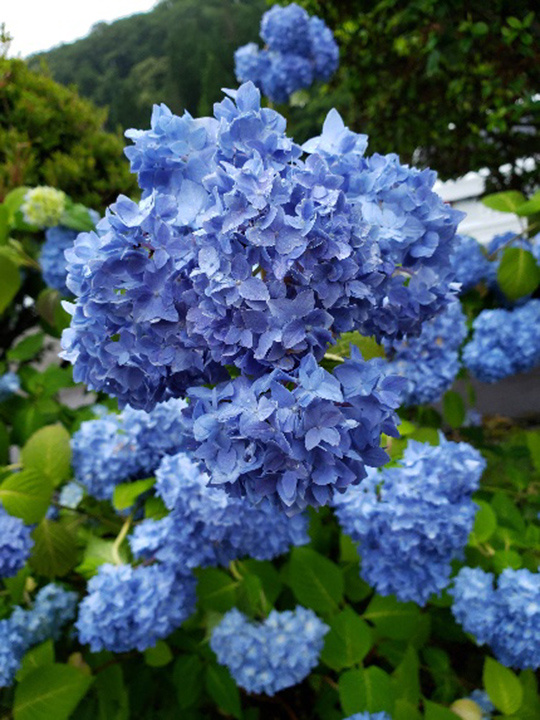
I have been in Daisen for just over one year now and have loved every day of it. Even the snowy ones and the too-hot-to-think ones, punctuated as they are with fun events, festivals and fireworks displays to look forward to throughout the year. I am looking forward to another year in this wonderful place.

Life in Daisen — Chris Hallbauer
2020-09-01
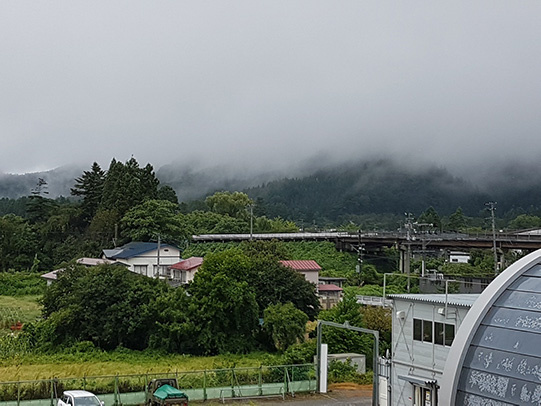
When I was given the broad-strokes of the area before arriving, I was giddy with excitement. My hometown and Nagaoka are sister cities, so I've grown up with the wonderful fireworks they provided for events throughout the year. But living close to Omagari (another of the other 3 big “hanabi towns”) has meant more fireworks than I dreamed possible. Seriously. An abundance of fireworks that boggles the very mind… From either the driveway, or my various windows, I can sometimes see several different local displays, on a clear night! But they’re so entrancing, I usually forget to use my camera, until it’s over…
However, the real allure for me was the close proximity to mountains and forests. Japan is riddled with mountains, but it’s still better to be close to them, rather than having to travel a few hours outside of Tokyo. My former home isn't exactly the flattest place in the U.S. - cycling and hiking up and down all of the hills there is what gave me calves like cantaloupes - but the horizon there still averages out to appear sort of flat and boring.
However, the real allure for me was the close proximity to mountains and forests. Japan is riddled with mountains, but it’s still better to be close to them, rather than having to travel a few hours outside of Tokyo. My former home isn't exactly the flattest place in the U.S. - cycling and hiking up and down all of the hills there is what gave me calves like cantaloupes - but the horizon there still averages out to appear sort of flat and boring.
In stark opposition, the majestic mountains surrounding Daisen are a constant source of joy and inspiration. Any time I start to feel 'flat', I just look out the nearest window, and observe what's going on. Sometimes it's just a clear view of the forested mountains. Other times, they might be breaking through a low cloud-cover, creating the illusion that they go up forever. Occasionally they have wonderful slow-motion battles with clouds that are struggling to push their way into the denser pressure system of the valley. It's even exciting (almost terrifying) when the hills and mountains are entirely hidden by fog, dust, agricultural smoke, or pollen - it's as if someone stole the mountains, or transported me back to North Texas against my will, while I was sleeping...
My first outing (after buying some gear) was to the mountains west of Omagari. I had no idea what I would encounter, and only a vague sense that if I followed enough random roads around the base of the hills, I might find a path up the mountain. It may seem haphazard to some, but I find it a much more fulfilling way to familiarize myself with an area.
In this way (after finding that a nearer trail-head in Nakasen was blocked off {and still is, to this day}); instinctively, I pulled into the hamlet I later found out was called Hirugawa, and carefully made my way up the tight road until I reached an abandoned stone cutter's workshop, where I parked. Still just following my gut, I proceeded to walk straight up to a slightly open spot in the tree line, and followed what I found to resemble a faintly worn path through the ferns, that eventually started to feel a little more intentional. I came upon a couple of large stone tablet (complete with kanji for me to not be able to read, at the time) on pedestals in a clearing, and stopped for a few moments of reverence (in case they were graves or of some religious importance).
My first outing (after buying some gear) was to the mountains west of Omagari. I had no idea what I would encounter, and only a vague sense that if I followed enough random roads around the base of the hills, I might find a path up the mountain. It may seem haphazard to some, but I find it a much more fulfilling way to familiarize myself with an area.
In this way (after finding that a nearer trail-head in Nakasen was blocked off {and still is, to this day}); instinctively, I pulled into the hamlet I later found out was called Hirugawa, and carefully made my way up the tight road until I reached an abandoned stone cutter's workshop, where I parked. Still just following my gut, I proceeded to walk straight up to a slightly open spot in the tree line, and followed what I found to resemble a faintly worn path through the ferns, that eventually started to feel a little more intentional. I came upon a couple of large stone tablet (complete with kanji for me to not be able to read, at the time) on pedestals in a clearing, and stopped for a few moments of reverence (in case they were graves or of some religious importance).
When I continued, I started coming across little stone buddha figures with increasing frequency. I wasn’t aware of their specific importance at the time, but it seemed polite to bow to each and every one of them. Better safe than sorry, when confronted with one’s own cultural ignorance. I ended up bowing a lot… Eventually I reached a paved road, on the other side of which was an old torii gate. After taking some time to pay my respect to the lonely residents of the neglected mountain shrine, I decided to take that road up the hill.
To my surprise, it led me to a nice trailhead.
I explored different branches until I finally reached a sheer face with a rope-climb. After making it up the line, it became apparent that I’d reached a broadcasting station (a television station, I later found out – the closest I’ll ever get to appreciating the existence of NHK); and I was presented with the best view I’ve been able to drink in for many years.
After this, still not knowing where on the base of the mountain it would lead; I followed the paved road back past the torii gate. It was getting dark, so I was relieved when the road brought me directly to the very same stone cutter's workshop I had parked at!
Since then, I've had countless other experiences in the mountains, and within the valley. Many involving murder-hornets, none involving bears (to my absolute horror and disappointment, respectively); but nothing will beat the mystery and dreamlike wonder of that first time out.
Since then, I've had countless other experiences in the mountains, and within the valley. Many involving murder-hornets, none involving bears (to my absolute horror and disappointment, respectively); but nothing will beat the mystery and dreamlike wonder of that first time out.
I explored different branches until I finally reached a sheer face with a rope-climb. After making it up the line, it became apparent that I’d reached a broadcasting station (a television station, I later found out – the closest I’ll ever get to appreciating the existence of NHK); and I was presented with the best view I’ve been able to drink in for many years.
After this, still not knowing where on the base of the mountain it would lead; I followed the paved road back past the torii gate. It was getting dark, so I was relieved when the road brought me directly to the very same stone cutter's workshop I had parked at!
Since then, I've had countless other experiences in the mountains, and within the valley. Many involving murder-hornets, none involving bears (to my absolute horror and disappointment, respectively); but nothing will beat the mystery and dreamlike wonder of that first time out.
Since then, I've had countless other experiences in the mountains, and within the valley. Many involving murder-hornets, none involving bears (to my absolute horror and disappointment, respectively); but nothing will beat the mystery and dreamlike wonder of that first time out.
So, as everyone here knows deep down, Japan is actually a land of 72 seasons, at least here in Touhoku. I count myself lucky to be able to recognize many of them. Here are some of my experiences with them:
I really had a ball in the winter. Walking around trails and parks in the falling snow in my flip-flops with not a soul around, sometimes no evidence of a recent human presence, save for the bear-alert posters tacked up everywhere.
When the last round of snow finally melted, and the temperature rose a bit; I became a little mournful. But being greeted by a gentle storm of cherry blossoms hit me with a burst of joy that sustained me for a while after the snow had left me.
I really had a ball in the winter. Walking around trails and parks in the falling snow in my flip-flops with not a soul around, sometimes no evidence of a recent human presence, save for the bear-alert posters tacked up everywhere.
When the last round of snow finally melted, and the temperature rose a bit; I became a little mournful. But being greeted by a gentle storm of cherry blossoms hit me with a burst of joy that sustained me for a while after the snow had left me.
I had been warned about the brown season – but with the limited snow fall (cuz: climate change?), we actually had several brown seasons. I heard the anxieties of local farmers about how this would affect the water-supply in the summer
Eventually, the green would return in the form of 山菜 (sansai – mountain vegetables) - and this also marked the return of my sworn enemy, the suzumebachi (murder hornet).
Eventually, the green would return in the form of 山菜 (sansai – mountain vegetables) - and this also marked the return of my sworn enemy, the suzumebachi (murder hornet).
I'd learned years ago that volcanic soil is very rich and fertile - but the rate at which the native plants grow seemed unnatural to me at first. Though I was disappointed to find out that farming is automated now, they still make sure the school kids have the opportunity to experience the old ways. Planting rice with the kiddos was wonderful. Feeling the rich mud between my toes as I re-enacted a scene that has occurred annually for thousands of years was almost surreal. And the time during which the rice paddies are smooth like glass, broken only by the cute little pinches of ambitious grass… definitely one of my favorite seasons.
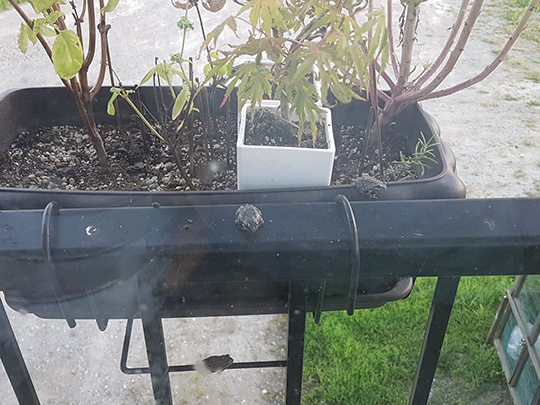
Then came the frogs. Oh my various gods, so many frogs! I was lulled to sleep every night by the din of froggy love songs for at least a month, until they finished ensuring the continuation of their species for the next season.
It ended up raining more than was apparently usual, so I stopped worrying about the farmers’ rice crops – until someone pointed out that now they were worried about the lack of direct sunlight, from all the rainstorms. And with so many marshy rice paddies around, I expected even more mosquitos - but the beginning of the annual dragonflies had been well timed by natural selection.
After burning my entire summer break on a special student project, and getting really antsy from assiduously following the “minimize travel” recommendations, I was finally able to take a break for another random encounter with the mountains.
With only the name Dakigaeri Valley remembered from a quick glance at an online map, I headed out.
The area felt extremely manicured and tourist-friendly - something which I have usually tried to avoid, because tourists are annoying. But the attendance was relatively sparse, so I continued down the path.
After seeing some of the most beautiful blue-green water I've ever witnessed, and suddenly passing through a few tunnels cut into the side of the mountain, I finally arrived at the end of the path - wherein I was greeted by a majestic waterfall! Huzzah!

Taking in this natural wonder recharged my batteries for a while, but now it's about time for me to head back out to enjoy even more of Japan’s 72 seasons. See ya on the trails!














